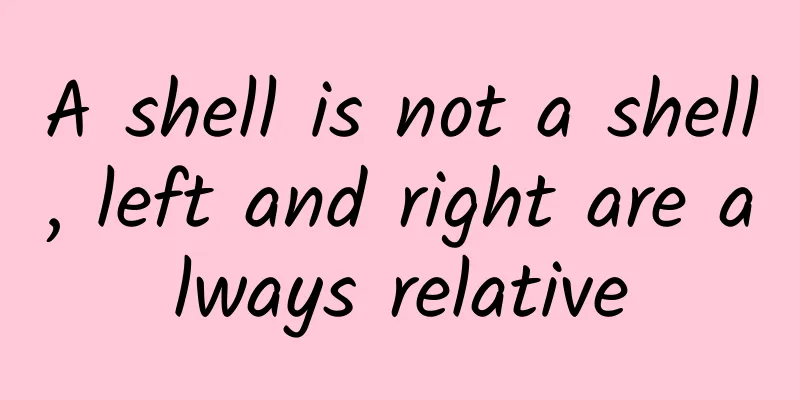It took him 8 years to finally publish his paper in Science, proving that mice have human-like imagination!

|
The brain of mice is only the size of our thumb tip, but a recent study found that mice, like humans, have imagination. They use their imagination to put themselves in a space they have explored before, or move distant objects to a specific location. Researchers believe that this achievement will have great uses in both clinical and basic research in the future. Written by | Wangxiang "Imagination is vital to human society. Almost all inventions happen twice, the first time in imagination and the second time in reality," Lai Chongxi told Fanpu. As a postdoctoral fellow at the Howard Hughes Medical Institute (HHMI), he should have been extremely excited at this time. Because he had just published a paper as the first author in the journal Science on November 2, revealing a secret that subverts cognition: like humans, mice have imagination. They use their imagination to put themselves in a space they have explored before, or move distant objects to a specific location. Paper publication page This ability to imagine places far away from one's current location is the basis for remembering past events and imagining possible future scenarios. "Now we've found that animals can do this, and we've found a way to study it," said Albert K. Lee, formerly a principal investigator at HHMI's Janelia Research Campus and now an HHMI investigator at Beth Israel Deaconess Medical Center. James W. Phillips, former special adviser to the British Prime Minister on business, energy and industrial strategy, praised the research highly, saying, "This is some of the most impressive work I have ever seen in the field of neuroscience. I think this technology has amazing potential and can become the focus of meta-science institutional experiments." He was Lai Chongxi's classmate when he was studying for his doctorate at the University of Cambridge in the UK. Lai Chongxi himself was not surprised. "This research took a long time, almost eight years in total. Now that the results are out, I don't feel that excited anymore." But he was very grateful for the support and patience given by his "bosses". After all, "if some bosses can't wait, the research may be cut off." Two "bosses" are also the corresponding authors of this paper, one is Albert Lee, and the other is Timothy D. Harris, the project leader and senior researcher of HHMI. Stereotype: Rats have no imagination The mouse brain is indeed much smaller than ours, about the size of the tip of our thumb, so much so that in the last century many scientists still believed that the mouse brain was a simple stimulus-response system. In the early 20th century, behaviorism gained prominence in the fields of psychology and biology. The core idea of this theory is that learning and behavior of biological individuals are primarily driven by responses to rewards and punishments. Behaviorists believe that individuals respond to stimuli in the environment and adjust their behavior based on the consequences of these stimuli (rewards or punishments). In other words, behaviorist theory emphasizes the relationship between external stimuli and responses, believing that this is the main mechanism for the formation of behavior. Edward Tolman, a professor at the University of California, Berkeley, disagreed. In 1948, he published Cognitive maps in rats and men, proposing a concept called "cognitive maps", arguing that when humans and animals explore the environment, they form a mental representation of the external world in their brains, and these representations construct mental models to guide their behavior. In other words, even without a reward or punishment mechanism, the organism's brain still stores information about the environment and models it. In 1971, American scientist John O'Keefe found evidence for Tolman's theory at the level of brain cell activity. He discovered a special type of nerve cell in the hippocampus of the mouse brain that was used to represent spatial location. The experimental process is as follows. He implanted an electrode recorder into the hippocampus of the mouse's brain, and then let the mouse walk freely in an unfamiliar room. When the mouse walked to a specific location, the frequency of discharge of cells encoding this location in the brain would increase. O'Keefe named these cells "place cells". Different place cells correspond to a specific location, and they form a map of the environment in the brain. Because of this discovery, O'Keefe won the 2014 Nobel Prize in Physiology and Medicine. When the human hippocampus is severely damaged, the ability to recall the past and imagine the future is lost at the same time. Many case studies of similar patients have verified the same situation. One of the most famous papers was published by Demis Hassabis and his mentor in 2007. Later, Hassabis turned to the industry and founded the artificial intelligence company DeepMind, leading the current wave of AI revolution. In other words, this ability of humans to psychologically project themselves into the past and re-experience past events, as well as project themselves into the future and pre-experience future events, has a special name - mental time travel. This is a specific type of imagination that is closely linked to memories of time, place, people, events, etc. So, can mice travel through psychological time? In fact, under a microscope, the brain tissue of rodents and primates is so similar that it takes a trained eye to tell them apart. Moreover, neuroscientists have previously decoded signals from rodent brains and found that they are not purely responses to sensations or instructions to move. For example, when a mouse is in a specific position, its corresponding place cells become active. Scientists can determine their location by recording the activity of place cells. But for most people, simply knowing where you are doesn’t qualify as “imagination,” which involves going beyond the immediate situation. And as recently as 2010, primate researchers claimed that mice lacked “cognition.” No one has a definitive answer. Lai Chongxi wanted to develop an animal model to conduct systematic research: If mice can activate corresponding place cells without going to a specific location, just by imagining that they have gone to a specific location, then this behavior is very close to the human psychological time travel. Reading "Thinking" In August 2014, Lai Chongxi entered Cambridge University to pursue a doctorate in neuroscience. At that time, he had already begun to conceive and design this experiment in his mind. One day in 2015, Phillips and Lai Chongxi, his classmates, were chatting by the lake, and he first heard about the early ideas of the project. He immediately thought that Lai Chongxi was the smartest and most creative of his peer neuroscientists in the UK. Years later, he wrote, "When he first described it to me, I felt that it was like something from the distant future, a huge conceptual leap that required technological advances and discoveries, coupled with a deep understanding of the concepts to achieve." The main difficulty with this experiment is that you can't tell the mice what to think or do. You have to give them cues, such as rewards, for performing a particular action. This kind of behavioral training is both a science and an art. At the same time, it is difficult to know what the mouse is thinking. Lai Chongxi thought of an ingenious experimental design: if mice can indeed think and imagine, then when the mouse is induced to think about going to a specific place, it should be possible to record in a predictable way that the corresponding place cells become active. To explore whether mice can do this, they used brain-machine interface (BMI) technology, surgically implanted electrodes into the mice's brains, and allowed the mice to travel through the metaverse through spatial imagination. This experiment placed the mice on a spherical treadmill in 360-degree immersive virtual reality (VR), and displayed a goal in the virtual world, asking the mice to run towards this goal. As the mouse ran on the treadmill, its movements were translated on the 360-degree screen, and its position in the VR environment was updated on the screen simultaneously - just as if the mouse was moving in the real environment. When the mouse reached the target position, it was rewarded (water). Then a new target was generated in the VR environment, and the above process was repeated. The mouse learned this task in a week. [Video please go to "Fanpu" to watch] In an initial phase, the team recorded the activity of place cells. They then used artificial intelligence to decode the activity of the biological neural network to calculate where the mice thought they were in the virtual reality task. Next, they performed a task named after the movie "Jumper." The team disconnected the treadmill, which meant the mice couldn't reach the goal by running. This forced them to use their brain activity to move around in the VR environment. When the mouse's brain activity was decoded as being in the target area, it would move to that location, and once it moved to the target location, they would receive a reward. Teleportation in the movie Jump The results showed that the mice could indeed navigate to the destination using only brain activity. Essentially, the mice navigated using their minds, first thinking about where they needed to go to get the reward. This thought process is something humans go through on a regular basis. For example, if a friend invites you to a familiar restaurant, you might imagine the places you’ll pass along the way before you leave. However, the Jumper experiment also revealed a problem, that is, it is difficult to keep the mice completely still. Humans have the same experience. When the environment you are in starts to float, you will involuntarily want to move with the environment, and it is difficult to stop this impulse. Even if you stop it, the brain will generate some signals and form noise. To address this, Chongxi designed a second task, “Jedi” (a reference to Jedi Knight, a nod to the movie Star Wars). In the experiment, the mice themselves were stationary, but had to “move” an object on the screen to a specific target in the VR environment using only brain activity. This is like a person sitting in an office and imagining picking up the cup next to the coffee machine and filling it with coffee. The team then changed the location of the target and asked the animals to produce activity patterns associated with the new location. The mice completed the task again. The team found that mice can control their hippocampal activity with precision and flexibility, likely similar to humans. A surprising finding was that the animals could also maintain this hippocampal activity, keeping their minds in a specific position for several seconds - a time frame similar to the time frame humans use to relive past events or imagine new situations. So far, from a scientific perspective, this paper has completed the most convincing demonstration of the cognitive ability of rodents. From the perspective of technological development, this work provides a brain-computer interface method for reading abstract signals in deep brain tissue (such as the hippocampus). Although brain-computer interfaces have been developed since the early 1990s, they are limited to the cerebral cortex (especially the motor cortex). This is the first time to read cognitive map activity in the deep brain tissue of animals. The cycle of discovery and invention Lai Chongxi is extremely fascinated by brain functions, especially "imagination". His interests were guided in large part by the book In Search of Memory, written by neuroscientist Eric Kandel, which not only presents his personal and professional life, but also describes the development and key discoveries in neuroscience and the nature and meaning of memory. Regarding the role of imagination in human beings, Lai Chongxi advocates the view of British philosopher David Hume: all people may be dominated by imagination, and without imagination, there will be no social arrangements. Lai Chongxi丨Source: Provided by myself It is the curiosity about how the brain produces imagination that has driven Lai Chongxi to focus on this for more than eight years. Although Lai Chongxi's concept and design are very clever, he suffers from the lack of ready-made hippocampal brain-computer interface tools. "This kind of deep tissue brain-computer interface does not exist at all, so we have to make something completely new." An invasive brain-computer interface consists of three parts. The first step is an array of cell-sized microelectrodes, which is used to read the electrical signals of nerve cells. The second step is a tool for online analysis of neural activity, which converts the original electrical signals into pulse signals. It is these neural pulse signals that complete the neural encoding of the external world and one's own thoughts in the brain. The third step is a decoder, which converts pulse signals from a large number of cells into interpretable variables, such as spatial position. Lai Chongxi said that they built an online analysis tool based on a field programmable gate array (FPGA) from scratch to output neural pulse signals, and this step alone took 4 years. O'Keefe, who discovered place cells, once told Lai Chongxi that he wanted to organize engineers to make this tool as early as the 1990s. However, it was not until 2016 that some usable tools were developed. "What we have completed is the most advanced, most accurate and fastest of the few online neural recording and analysis tools. It is also the only FPGA chip that can allow the decoder to obtain information about a single nerve cell and a single nerve pulse within one millisecond. The breakthrough in technical indicators has opened up many possibilities for scientific research. Brain-computer interface for deep brain tissue is one of them." Lai Chongxi told Fanpu. In Phillips's view, it is difficult to keep engineering and discovery in sync for a long time in traditional research, but Lai Chongxi's research provides a good example of realizing the "cycle of discovery and invention." When Lai Chongxi started this project, he focused on technology first, hoping to record an order of magnitude more neurons at a time than when he started, and to decode the meaning of these neurons in a millisecond instead of hours. The number and accuracy of neurons that can be processed at the same time are the key to decoding quality. The faster the neural signals are processed, the more time budget is left for the decoder. Decoders are as important as online recording and analysis tools. Conventional decoders are very sensitive to noise, which may come from imagination itself or from slight changes in the position of microelectrodes in the brain. In order to solve these difficulties, Lai Chongxi used the most advanced AI algorithm to complete the denoising process. After applying the self-developed FPGA chip to specific experiments, Lai Chongxi and his team set out to establish a mapping relationship with VR, VR programming, animal behavior training, etc., record and analyze data, and continuously optimize the AI decoder in the process. These works took another 4 years to finally be written. Caleb Kemere, a professor at Rice University, wrote in an opinion column in Science magazine: This discovery is an exciting expansion of the application of brain-machine interfaces (BMIs) from sensory motor functions to more cognitive areas, and suggests that hippocampal activity is under volitional control. In the future, Lai Chongxi hopes to conduct clinical research based on this achievement. He believes that all these tool chains can be used on humans. Microelectrodes are implanted in deep brain tissue, and the neural activity analyzed online is decoded by AI to read abstract thoughts and remove noise, and then the brain or environment is manipulated as needed. It will be possible to read and write the brain through such tools in the future. Lai Chongxi believes that this tool chain will have great uses in both clinical and basic research. References [1] https://www.science.org/doi/10.1126/science.adh5206 [2] https://www.biorxiv.org/content/10.1101/2023.04.07.536077v1 This article is supported by the Science Popularization China Starry Sky Project Produced by: China Association for Science and Technology Department of Science Popularization Producer: China Science and Technology Press Co., Ltd., Beijing Zhongke Xinghe Culture Media Co., Ltd.
1. Go to the "Featured Column" at the bottom of the menu of the "Fanpu" WeChat public account to read a series of popular science articles on different topics. 2. Fanpu provides a function to search articles by month. Follow the official account and reply with the four-digit year + month, such as "1903", to get the article index for March 2019, and so on. Copyright statement: Personal forwarding is welcome. Any form of media or organization is not allowed to reprint or excerpt without authorization. For reprint authorization, please contact the backstage of the "Fanpu" WeChat public account. |
Recommend
What does a doctor mean by "light diet"? I bet few people know
Let's do a multiple-choice question first. Wh...
Domestic products do not need Xiaohongshu-style marketing
Xiaohongshu has started to take the black-and-red...
Who is most likely to become the fourth pole of China's Internet?
[[157689]] BAT has already occupied an absolutely...
Can having a cold reduce the risk of COVID-19 infection? The truth is not necessarily that simple
Some studies in the past two years have found tha...
Teacher Dabin's "Short Video Editing Operation Practice Class" 0 basic teaching seven days to get started to master
Training course video lecture content introductio...
2019 Mobile Browser Market Share Rankings, Minimalist Quark Not on the List
When smartphones first came out, UC Browser was a...
Is it a dinosaur or a fish? Although it is not a pond creature, it will never become a dragon.
Among prehistoric marine animals, ichthyosaurs ar...
How to promote and attract traffic to Douyin store?
Many merchants who sell things on Douyin have ope...
Event operation: Taking advantage of the Spring Festival red envelope event, analyze the core framework of the event!
The red envelope activities for products worth hu...
The quality of an app does not lie in its promotion, but in its
The quality of an APP does not lie in its promoti...
Analysis of memory overflow and memory leak
[[130745]] We often talk about memory overflow an...
Is the Douyin likes task real? Will it be discovered by the system?
This article mainly introduces relevant informati...
Don’t blame the router for factors that affect Wi-Fi signal coverage
In the test of wireless routers, we know that the...
August 2024 "Science" Rumors List: Children's medication, half the adult dose? Can choosing good sports equipment improve physical test scores?
1. Can “back sunning” cure all diseases only if d...
Humans cannot marry close relatives, but what about animals?
I recently saw an interesting content: "Why ...









